
Finnhorse
- Home
- Our work
- Farm animals
- Nordic native breeds
- Finnhorse
Origin: Finland
Finnish name: Suomenhevonen
Other names: Finnhorse, Finnish Universal, Finskt kallblod
Weight: average 535 kg
Height: 130 -148 cm (small horse), 150 – 170 cm (other types)
Colour: majority chestnut, other bay, palomino and black
Type: multipurpose horse, average height, and sturdy conformation: pony, work, trotting, riding
Offspring: 1127 (2020)
Number of breeding females: 1840 (2020)
Not at Risk – Vulnerable – Endangered – Critically Endangered – Extinct
History
The oldest single horse bone found in Finland is dated to the Bronze Age. According to the latest research, the earliest family roots of the Finnhorse are directed to the east. Over the centuries, the Finnish horse population has been influenced by both east and west (Kantanen & Bläuer 2013; Kvist et al 2019; Sild et al 2019).
The small and resilient horses of the Hakkapeliitta (Finnish cavalrymen during the Thirty Year’s War 1618 to 1648) were already well known, and the horse has also been a significant means of transport in Finland. In agriculture and forestry, the importance of horsepower became considerable at the end of the 19th century.
The first studbooks for a Finnish horse were established in the 1890s, when efforts began to breed it as a pure breed. The breeding objective was an all-round work horse for both agricultural and transport needs. The Finnish horse breeding leadership was contested by the regional agricultural society, called Uudenmaan ja Hämeen läänien maanviljelysseura, the horse breeding association, known as Hippos, and the state (Solala 2021). In 1907, the Finnhorse’s current studbook was introduced throughout Finland. The state maintained the stallion studbook, and the mare studbooks were carried out by special horse breeding federations. In 1918, the mares were also transferred under state administration. Gradually, the horse’s performance characteristics were also included in to the studbook, and the appearance of the horse was no longer the only criterion for evaluations. In the early 1970s, The Finnish Hippos began to be responsible for the Finnhorse’s studbook.
During the Second World War, especially during the Winter War, the mobility of the Finnish army was on the horse. Finnhorse took care of maintenance in all service branches, and the cavalry moved on horses. In the Winter War, 7,204 horses were killed or disappeared, 14,573 in the Continuation War and 472 in the Lapland War. During post-war reconstruction and in the payment of war reparations, the Finnhorse’s work input was also important. According to the Agricultural Census, there were as many as 400,000 adult horses or foals in Finland in the post-war years.
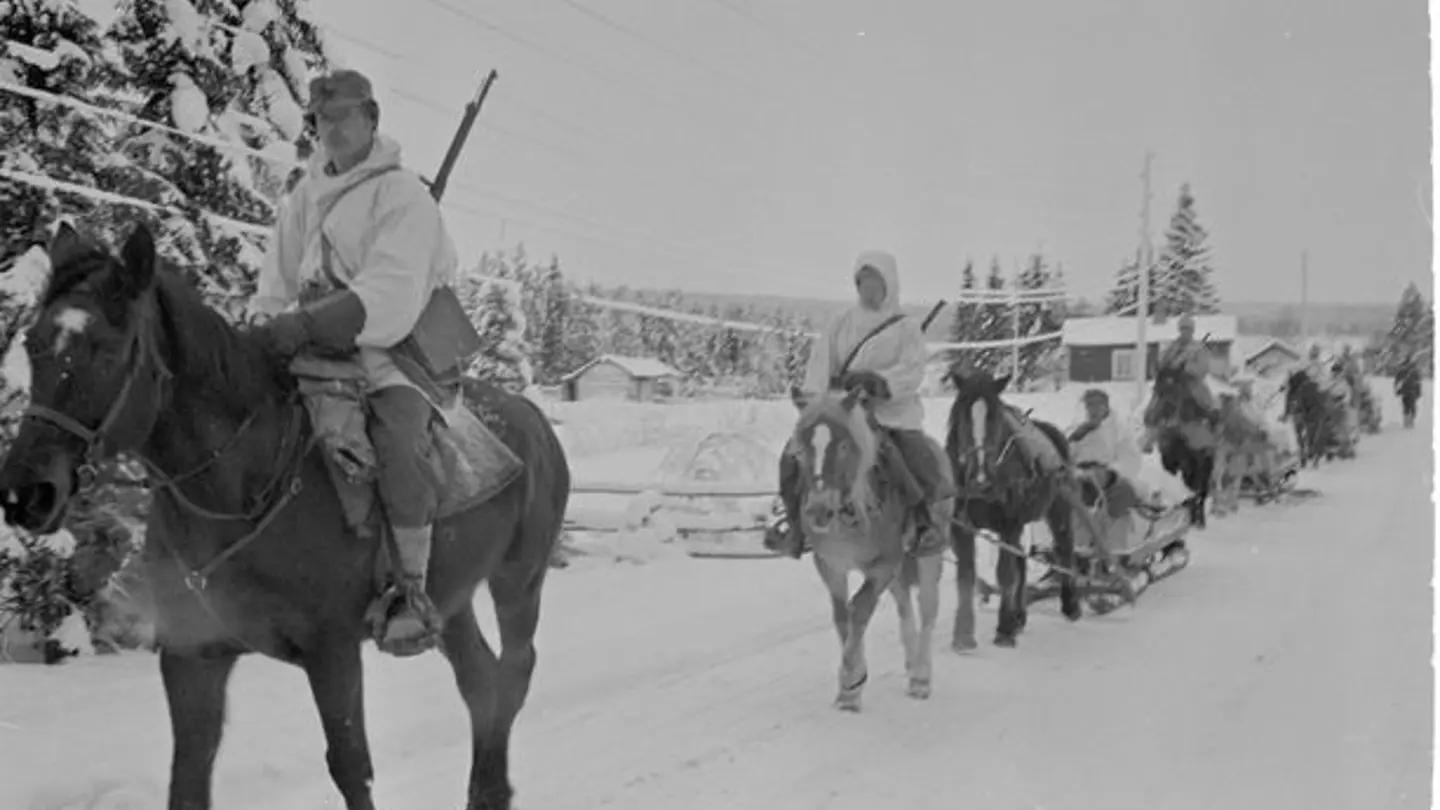
The work horse era ended in Finland at the end of the 1960s. The number of tractors exceeded the number of horses, and the change in the taxation of forestry work made the use of horsepower unprofitable. The Finnhorse population collapsed in the late 1960s. The breed was going to end up in ruin. However, at the end of the traditional working use of the Finnhorse, the trotting races offered the breed a new opportunity as a sport horse. The number of Finnhorse individuals was at its lowest in 1987, when there were only 14,000 left.
Conservation
Today, the number of Finnhorse is only a fraction of the golden age of the 1950s. In 2020, the Finnhorse population was 19,000, of which 1,840 were breeding mares and 1,127 foals born. The Finnhorse as a breed is not endangered. Finnish Hippos maintains the Finnhorse’s studbook. The Finnish horse’s studbook has four breeding directions: trotter, riding horse, pony type and work horse. Suomenhevosliitto represents the Finnhorse in all its uses.
The work horse is currently endangered, as the use of horses in agricultural and forestry work has decreased significantly. There are only 500 individuals left. The Finnhorse is one of the best work horses in the world as it has a traction capacity of up to 200% compared to its own weight. Suomen työhevosseura aims to promote the use and appreciation of Finnish work horse and to revitalize its breeding and future use e.g. in tourism and recreational services. The Natural Resources Institute Finland (Luke) has opened the Finnhorse genome as the second horse reference genome in the world which can be used in research in cold-blooded horse breeds. This reference genome was constructed from a work horse called Tähden Piirros, owned by Kauko Tuominen.
As trotters, 3,000 Finnhorses compete on racetracks every year. The biggest race event of the year, Kuninkuusravit, has been held since 1924, and both the King and Queen are selected during the competitions. The most successful Finnhorse racer is a euro millionaire and five-time winner Viesker. Finnhorses also compete annually for the Finnish championship in mónte.
Due to its nature and structure, the Finnhorse is also ideal for horse riding schools, as well as for the different riding sports. In Suomenratsujen kuninkaalliset event there are competitions in dressage, show jumping, and eventing. Suomenratsut is an association founded in 1973 that promotes the use of Finnhorse in horse riding.
Mission of Suomenpienhevosyhdistys is to strengthen the position of pony type Finnhorse by sharing information on its versatility and by promoting its use. The association organizes not only coaching and courses, but also the annual competitions in dressage, show jumping and eventing. To promote breeding, the association rewards pony type Finnhorse that have been successful in breed evaluations. The association was established in 2000.
The gene banking of Finnhorse genetic resources has so far focused on cryopreservation of semen. The goal is to freeze 100 portions from 25 stallions. In the future, embryos may also be included in the gene bank.
Characterization
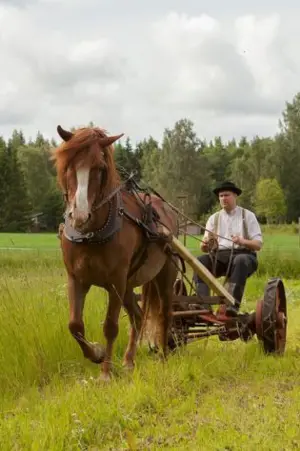
The breeding objectives of the Finnhorse breed, which has a wide range of characteristics, have always been changed to match the intended use of the horse. Today, the Finnhorse is bred as trotting, riding, pony type and work horse. The Finnhorse serves as both a hobby horse and a racehorse. The all-round horse is also suitable for social pedagogy and traditional work horse use. Finnhorse was declared as the Finnish National Horse on the 100th anniversary of the breed in 2007.
Genetic characterization can be used to investigate the genetic variation, inbreeding, pedigree and kinship and relationship with other horse breeds. NordGen’s literature review on Nordic livestock breeds showed that the Finnhorse was the most studied Nordic horse breed (Kierkegaard et al. 2020) along with the Icelandic horse. According to the review 53 articles were related to the characterization of Finnhorse. Of the studies, 22 dealt with the characterization of the phenotypic traits: body size and growth, performance, crib-biting, fertility, feeding and physiology. Almost as many studies were found on breeding or gene mapping. The genetics and genomics of the Finnhorse have been studied by microsatellite and SNP markers, as well as by mitochondrial and whole genome sequencing. A total of nine studies dealt with genetic diversity within the breed or the relationship of the Finnhorse to other breeds. On the other hand, the Finnhorse was discussed in only four studies examining the social, cultural or economic significance of the horse. However, the Finnish horse is currently on focus in research, and in 2021, for example, a doctoral dissertation in the field of history on the birth of the Finnish horse breed appeared (Solala 2021).
Fun facts
The Finnish universal horse is the only native horse breed in Finland.
Ancestry of each Finnhorse today leads to one of the four founder stallions: Jaakko, Kirppu, Eino and Uljaanpoika.
Two Finnhorse mares, Jina and Jena, were the world’s first foals that were diagnosed for sex as preimplantation stage embryos.
References
Back, S. (2016). Osteokondroosin Perinnöllinen Vaihtelu Suomenhevosilla – Prevalence and heritability of osteochondrosis in the Finnhorse population. University of Helsinki, available at: https://dspace2.lib.helsinki.fi/handle/10138/174433
Conn, L. B. (2017). The role of myostatin polymorphisms in the finnhorse and shetland pony breeds, 57.
Cothran, E., Juras, R. & Macijauskiene, V. (2005). Mitochondrial DNA D-loop sequence variation among 5 maternal lines of the Zemaitukai horse breed. Genetics and Molecular Biology 28(4), 677–681.
Ettala, A. (2015). Suomenhevosen Geneettisen Vaihtelun Arviointi Sukupuutiedoista – The genetic variability in finnhorse analysed using pedigree data. University of Helsinki, available at: https://helda.helsinki.fi/handle/10138/158993
Gao, J. (2017). Effects of fat deposition on the expression of insulin-signaling pathway and MTORC1 genes in Finnhorse Mares. Master’s thesis. Helsingfors Universitet, 42.
Hallamaa, R. E. (2009). Characteristics of equine summer eczema with emphasis on differences between Finnhorses and Icelandic horses in a 11-year study. Acta Veterinaria Scandinavica 51, 29. doi:10.1186/1751-0147-51-29
Hemmann, K., Ahonen, S., Raekallio, M., Vainio, O. & Lohi, H. (2014a). Exploration of known stereotypic behaviour-related candidate genes in equine crib-biting. Animal 8(03), 347–353. doi:10.1017/S1751731113002346.
Hemmann, K., Raekallio, M., Vainio, O. & Juga, J. (2014b). Crib-Biting and its heritability in Finnhorses. Applied Animal Behaviour Science 156(July), 37–43. doi:10.1016/j.applanim.2014.04.008.
https://www.hippos.fi/suomenhevonen/
Huhtinen M, Peippo J, Bredbacka P. (1997). Successful transfer of biopsied equine embryos. Theriogenology. 1997 Aug;48(3):361-7. doi: 10.1016/s0093-691x(97)00247-1.
Kantanen, Juha & Bläuer, Auli 2013. Transition from hunting to animal husbandry in Southern, Western and Eastern Finland: new dated osteological evidence. Journal of Achaeological Science 40 (2013). 1646–1666. http://dx.doi.org/10.1016/j.jas.2012.10.033.
Katila, T., Reilas, T., Nivola, K., Peltonen, T. & Virtala, A.-M. (2010). A 15-year survey of reproductive efficiency of standardbred and Finnhorse Trotters in Finland-descriptive results. Acta Veterinaria Scandinavica 52(1), 40.
Kierkegaard, L.S., Groeneveld, L.F., Kettunen, A., Berg, P. (2020). The status and need for characterization of Nordic animal genetic resources, Acta Agriculturae Scandinavica, Section A — Animal Science, 69:1-2, 2-24, DOI: 10.1080/09064702.2020.1722216
Kierkegaard, L., Groeneveld, L., Kettunen, A., and Peer Berg. 2020. The status and need for characterization of Nordic animal genetic resources. Acta Agriculturae Scandinavica, Section A — Animal Science. https://doi.org/10.1080/09064702.2020.1722216.
Kvist L, Honka J, Niskanen M, Liedes O, Aspi J (2020). Selection in the Finnhorse, a native all-around horse breed. Journal of Animal Breeding and Genetics · November 2020 DOI: 10.1111/jbg.12524
Ojala, Ilmari (toim.) 1997. Suomenhevonen Suomen puolesta 1939–1945. Karisto Oy.
Ojala, Ilmari 1996. Suomenhevonen. Teoksessa Dossenbach, Monique & Dossenbach, Hans D., Tammen suuri hevoskirja 3. Kustannusosakeyhtiö Tammi. 47–95.
Peippo J, Huhtinen M, Kotilainen T. (1995). Sex diagnosis of equine preimplantation embryos using the polymerase chain reaction. Theriogenology. 1995 Oct;44(5):619-27. doi: 10.1016/0093-691x(95)00242-z.
Petersen, J. L., Mickelson, J. R., Cothran, E. G., Andersson, L. S., Axelsson, J., Bailey, E., Bannasch, D., et al. (2013a). Genetic diversity in the modern horse illustrated from genome-wide SNP data. Edited by Hans Ellegren. PLoS ONE 8(1), e54997. doi:10.1371/journal.pone.0054997.
Petersen, J. L., Mickelson, J. R., Rendahl, A. K., Valberg, S. J., Andersson, L. S., Axelsson, J., Bailey, E., et al. (2013b). Genome-Wide analysis reveals selection for important traits in domestic horse breeds. Edited by Joshua M. Akey. PLoS Genetics 9(1), e1003211. doi:10.1371/journal.pgen.1003211
Pouta, E., Tienhaara, A. & Ahtiainen, H. (2016). Citizens’ preferences for the conservation of agricultural genetic resources. In Advances in Farm Animal Genomic Resources. Frontiers Media SA.
Pösö, J. & Ojala, M. (2008). Estimates of genetic parameters of trotting performance traits for repeated annual records. Agricultural and Food Science 6(1), 11–18.
Pösö-Sievanen, L. (2015). Suomen Hevosalan Sidosryhmien Näkemys Suomen Hevosmatkailun Maabrändistä Ja Sen Kehittämisestä – The image of Finland’s equestrian tourism country brand and its development according to the stakeholders of finland’s equestrian industry. Laurea University of Applied Science, available at: https://www.theseus.fi/bitstream/handle/10024/97859/Hevosmatkailun%20brandi%20hevosalan%20sidosryhmien%20mukaan_ONT_Laura%20Poso-Sievanen.pdf?sequence=1
Raento, P. (2016). Geopolitics, identity, and horse sports in Finland. In Critical Geographies of Sport: Space, Power and Sport in Global Perspective. Routledge.
Ruohoniemi, M., Ahtiainen, H. & Ojala, M. (2003). Estimates of heritability for ossification of the cartilages of the front feet in the Finnhorse. Equine Veterinary Journal 35(1), 55–59.
Saastamoinen, M. (1990a). Factors affecting growth and development of foals and young horses. Acta Agriculturae Scandinavica 40(4), 387–396. doi:10.1080/00015129009438574.
Saastamoinen, M. (1990b). Heritabilities for body size and growth rate and phenotypic correlations among measurements in young horses. Acta Agriculturae Scandinavica 40(4), 377–386. doi:10.1080/00015129009438573.
Saastamoinen, M. T. (1991). Factors affecting age at onset of breaking, training, qualifying and first start in Finnish trotters. Acta Agriculturae Scandinavica 41(2), 137–145. doi:10.1080/00015129109438595.
Saastamoinen, M. T. & Ojala, M. J. (1991a). Estimates of genetic and phenotypic parameters for racing performance in young trotters. Acta Agriculturae Scandinavica 41(4), 427–436. doi:10.1080/00015129109439925.
Saastamoinen, M. T. & Ojala, M. J. (1991b). Influence of birth-Month on age at first start and racing performance in young trotters. Acta Agriculturae Scandinavica 41(4), 437–445. doi:10.1080/00015129109439926.
Saastamoinen, M. T. & Ojala, M. (1994). Influence of different combinations of racing years on early career performance in trotters. Acta Agriculturae Scandinavica, Section A – Animal Science 44(4), 208–213. doi:10.1080/09064709409410900.
Saastamoinen, M. T. & Nylander, A. (1996a). Genetic and phenotypic parameters for age at starting to race and racing performance during early career in trotters. Livestock Production Science 45(1), 63–68.
Saastamoinen, M. T. & Nylander, A. (1996b). Genetic and phenotypic parameters for age and speed at the beginning of racing career in trotters. Acta Agriculturae Scandinavica, Section A – Animal Science 46(1), 39–45. doi:10.1080/09064709609410922.
Saastamoinen M. (ed) (2007). Suomenhevonen. Suomen Hippos ry. Gummerus kirjapaino Oy, Jyväskylä.
Sairanen, J., Nivola, K., Katila, T., Virtala, A.-M. & Ojala, M. (2009). Effects of inbreeding and other genetic components on equine fertility. Animal 3(12), 1662–1672. doi:10.1017/S1751731109990553.
Sairanen, J., Katila, T., Virtala, A.-M. & Ojala, M. (2011). Effects of racing on equine fertility. Animal Reproduction Science 124(1–2), 73–84. doi:10.1016/j.anireprosci.2011.02.010.
Schroderus, E. & Ojala, M. (2010). Estimates of genetic parameters for conformation measures and scores in Finnhorse and Standardbred foals: genetic parameters for foal conformation. Journal of Animal Breeding and Genetics 127(5), 395–403. doi:10.1111/j.1439-0388.2010.00856.x.
Schuurman, N. & Nyman, J. (2014). Eco-national discourse and the case of the Finnhorse: Eco-national discourse and the Finnhorse. Sociologia Ruralis 54(3), 285–302. doi:10.1111/soru.12040.
Sild, E., Rooni, K., Värv, S., Røed, K., Popov, R., Kantanen, J. & Viinlass, H. (2019). Genetic diversity of Estonian horse breeds and their genetic affinity to Northern European and some Asian breeds. Livestock Science 220(February), 57–66. doi:10.1016/j.livsci.2018.12.006.
Solala, Hilja 2017. Turvallinen suomenhevonen 1917–2017. Teoksessa Lehtomäki, Kirsti (toim.), Suomi turvassa 100 vuotta. Ajoneuvot suomalaisten turvana. Mobilia. 69–75.
Solala, Hilja 2021. Suomalaisen hevosrodun synty. Maatiaishevonen ja kotieläinjalostuksen murros 1893–1907. Doctoral dissertation. Tampere University. http://urn.fi/URN:ISBN:978-952-03-2031-7.
Suontama, M., Saastamoinen, M. T. & Ojala, M. (2009). Estimates of non-genetic effects and genetic parameters for body measures and subjectively scored traits in Finnhorse trotters. Livestock Science 124(1–3), 205–209.
Suontama, M., van der Werf, J. H. J., Juga, J. & Ojala, M. (2011). The use of foal and studbook traits in the breeding programmes of Finnhorse and Standardbred trotters: Foal and studbook traits of trotters. Journal of Animal Breeding and Genetics 128(2), 114–123. doi:10.1111/j.1439-0388.2010.00886.x.
Suontama, M., van der Werf, J. H. J., Juga, J. & Ojala, M. (2012). Genetic parameters for racing records in Trotters using linear and generalized linear models. Journal of Animal Science 90(9), 2921–2930. doi:10.2527/jas.2011-4526.
Suontama, M., van der Werf, J. H. J., Juga, J. & Ojala, M. (2013). Genetic correlations for foal and studbook traits with racing traits and implications for selection strategies in the Finnhorse and Standardbred trotter: Conformation, functional and racing traits in trotters. Journal of Animal Breeding and Genetics 130(3), 178–189. doi:10.1111/j.1439-0388.2012.01011.x. [Crossref], [PubMed], [Web of Science ®], [Google Scholar]
Tenhunen, S. & Salonpää, T. (2016). Suomenhevosoriiden Valinta Geneettiseen Pitkäaikaissäilytykseen – Selection of Finnhorse Stallions for Cryopreservation. Savonia University of Applied Sciences, available at: https://theseus32-kk.lib.helsinki.fi/handle/10024/109215
Thuneberg-Selonen, T., Pösö, J., Mäntysaari, E. & Ojala, M. (1999). Use of individual race results in the estimation of genetic parameters of trotting performance for Finnhorse and Standardbred Trotters. Agricultural And Food Science in Finland 8, 353–363.
Read more about our other native breeds
-
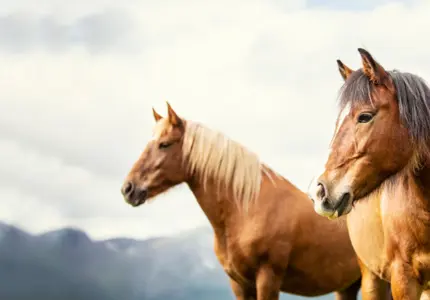
Nordland/Lyngen Horse
The first known and documented exhibition where this breed participated, was in 1898 at Lyngseidet in Troms. In the 1930s, organized breeding of Nordland/Lyngen horses started.
Read more about the breed
-
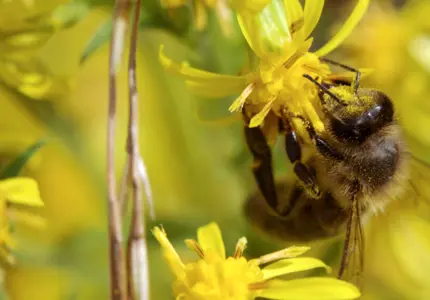
The Nordic brown bee
Honey bees are threatened by intensive agriculture, habitat loss and climate changes worldwide and are important to conserve, not only due to their honey production but also due to their pollination services.
Read more about the breed
-
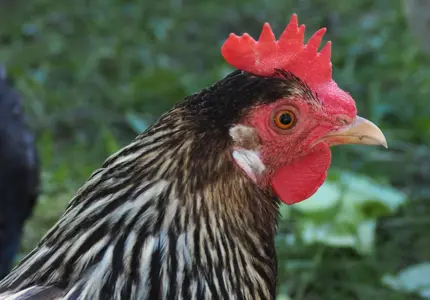
Finnish Landrace Chicken
In 1974, the agricultural advisory agency collaborated with Seiskari and published a call to find remains of the Finnish landrace chicken. As a result, one flock was found in South-East Finland. This family line was named after its geographical location as “Savitaipaleenkanta”.
Read more about the breed